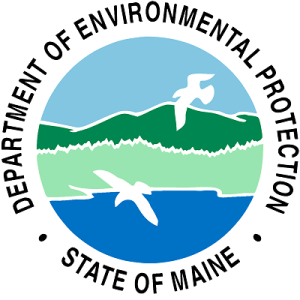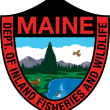Emergency law in Maine affecting boaters designed to halt spread of aquatic invasive species
AUGUSTA — To reduce the spread of aquatic invasive species in Maine, a law was passed by the Maine Legislature that requires boaters to take specific actions to encourage water to drain from their watercraft prior to entering a water body or leaving a launch site (PUBLIC LAW 2023 CHAPTER 190). Aquatic invasive species are any fish, wildlife, or plant species that spreads to a water body where they do not naturally occur. These species are often transferred to new locations on watercraft, watercraft trailers, and other equipment associated with water recreation, and they impact the health of our waters, fish, and wildlife.
Maine Department of Inland Fisheries & Wildlife provides more information:
Effective June 16, 2023, boaters are now required to do the following:
- Prior to entering a water body and when preparing to leave launch sites, boaters are required to remove or open any devices designed for routine removal/opening (for example, hull drain plugs, bailers, live wells, ballast tanks) to encourage draining of areas containing water (excluding live bait containers). This must be done in a way that does not allow drained water to enter any inland water of the state.
This puts into law what the Clean, Drain, Dry educational and outreach campaign has already been encouraging boaters to do. By ensuring that all boaters are draining water when it is from a different source than the inland water body they are about to enter, the risk of spreading aquatic invasive species including some that are not always visible by eye, to new areas is drastically reduced. Similar laws are already in effect in more than 20 other states, including neighboring New Hampshire, Vermont, and New York. This law will limit the spread of aquatic invasive species we already have in Maine while proactively limiting potential for the introduction of aquatic invasive species that would be new to the state such as quagga mussels and the spiny water flea.
FREQUENTLY ASKED QUESTIONS
What aquatic invasive species should I be worried about in Maine?
An aquatic invasive species is any fish, wildlife, or plant that is known to spread to water bodies they are not native to. To name just a few already in Maine, this includes species like northern pike, black crappie, rusty crayfish, variable-leaf milfoil, brittle naiad, and banded mystery snails.
Why do we care about the spread of aquatic invasive species?
Aquatic invasive species can often have irreversible negative impacts on our water bodies, the outdoor recreation they support, and native fish and wildlife species. The modifications that occur in our natural systems when new aquatic invasive species are introduced disrupt natural ecological processes, can threaten human health & safety, and result in costly, not always successful mitigation efforts.
Where should I drain my watercraft?
Away from any inland water body to prevent direct draining into a water body. Watercrafts should NOT be drained on the boat launch ramp. Since the transfer of aquatic invasive species to new areas within a water body can worsen the infestation, especially in high traffic launch areas, the preferred practice is to prevent direct draining back into the water body even when leaving the water body.
What does encouraging draining of a watercraft entail?
Boaters shall remove or open any hull drain plugs, bailers, valves, live wells, ballast tanks and other devices designed for routine removal or opening and closing to encourage water to drain from areas containing water. Containers holding live baitfish for personal or commercial use are exempted from these requirements.
What is considered a watercraft?
"Watercraft" means any type of vessel, boat, canoe, or craft capable of being used as a means of transportation on water, other than a seaplane. This includes motorboats, sailboats, paddle craft (canoes, kayaks, standup paddleboards, etc.)
How else can I help prevent the spread of aquatic invasive species?
In addition to draining water, boaters should clean off visible aquatic plants, animals, and mud from watercraft, motor, trailer, and equipment before leaving water access. Fines can be up to $2,500 for transporting any aquatic plant. All equipment should also dry before entering another water body.
What if I keep my watercraft on one water body and don’t visit other waters?
The new law was written in a way that allows watercraft to still operate bilge pumps to remove rain and lake water that may have entered their watercraft while on that water body, providing the watercraft met the requirement of the new law prior to launching.

































